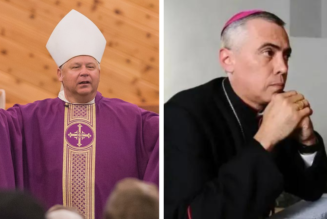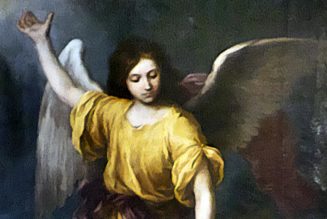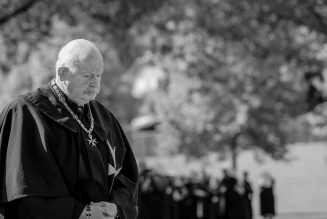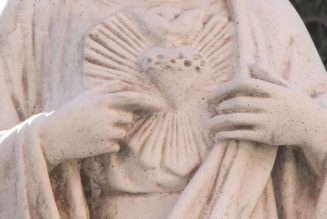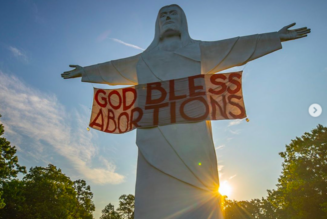
Twenty years ago, for the solemn feast of Sts. Peter and Paul — princes of the apostles and patrons of the city of Rome — St. John Paul II did something very unusual. He did not celebrate the papal Mass in St. Peter’s Square. He attended, to be sure — “presiding” and delivering the homily — but the main celebrant was Cardinal Joseph Ratzinger.
The Holy Father was not in poor health; he had returned 48 hours previously from his historic visit to Ukraine. Rather, it was a singular honor given to Cardinal Ratzinger on the 50th anniversary of his priestly ordination. The young Joseph Ratzinger was ordained a priest in the cathedral of Freising on June 29, 1951.
“Personal holiness extended to the supreme sacrifice, missionary outreach combined with constant concern for unity, the necessary integration of spiritual charism and institutional ministry,” John Paul wrote to Ratzinger for the occasion, observing that the lives of Peter and Paul shed light on Ratzinger’s long priestly service.
Noting that Ratzinger’s service has “been a great comfort to me in the daily effort of my service to Christ and to the Church,” John Paul wrote that the holy apostles had “inspired your priestly life and your ecclesial service in the loftiest way.”
It turned out that there was still another service, more lofty still, awaiting Cardinal Ratzinger — that of succeeding John Paul.
Ten years later, on his 60th anniversary, Pope Benedict XVI would celebrate the Mass of Peter and Paul himself and would reflect at length on his long priestly service.
Given that the coincidence of the Solemnity of Sts. Peter and Paul with Benedict’s anniversaries, one might consider the length and breadth of Ratzinger/Benedict’s service to the Church by looking at those Peter and Paul feasts in Rome on his decennial anniversaries.
1961: John XXIII’s Hopes
By his 10th anniversary as a priest, at age 34, Father Joseph Ratzinger was already an esteemed theological scholar in the prestigious Germany universities.
Vatican II was to begin in 1962. Cardinal Josef Frings of Cologne asked Ratzinger to draft an important speech on the agenda for the upcoming council, to be delivered in Genoa in November 1961. Not long after Cardinal Frings delivered the speech, a bold call for reform, he was summoned by St. John XXIII. Cardinal Frings was nervous that he had upset the Holy Father; to the contrary, John XXIII told him that he had put into words exactly what the Holy Father hoped for the Council.
That the words were actually those of Joseph Ratzinger was unknown at the time. In the years ahead, Ratzinger would emerge as one of the more significant theological advisers at the Council.
On the Solemnity of Sts. Peter and Paul 1961, Pope John was full of hope for the Council to come. It was time, he preached, for “courage,” for “remaining faithful to this doctrine, apostolic doctrine, doctrine of Christ.”
At the opening of the Council itself, Pope John would emphasize that the perennial doctrine of the Church needed to be presented in new ways suitable to new times, not to be set aside. It was a time of hope for a great missionary expansion.
1972: The Smoke of Satan
It did not turn out that way.
St. Paul VI celebrated the anniversary of his papal ministry on the Solemnity of Peter and Paul, and so his homilies on that occasion took on a certain “state of the Church” character. Instead of looking at 1971, we might take instead the homily of 1972, the most famous Peter and Paul homily ever given.
“From some fissure the smoke of Satan has entered the temple of God,” Paul VI dramatically said of the situation of the Church, noting that there was rampant “doubt, incertitude, disquiet, dissatisfaction, confrontation.”
Contrasting the hopes that “after the Council there would be a day of sunshine for the history of the Church,” Paul VI lamented that, “instead, it is the arrival of a day of clouds, of tempest, of darkness. … We seek to dig abysses instead of filling them in.”
“We believe in something that is preternatural that has come into the world precisely to disturb, to suffocate the fruits of the Ecumenical Council, and to impede the Church from breaking into the hymn of joy at having renewed in fullness its awareness of itself,” Paul VI added.
With the Holy Father himself lamenting the work of Satan in the Church, Father Ratzinger had returned to his theological scholarship in Germany. By the early 1970s he was filled with dismay that the conciliar project had been followed by such turmoil.
1981: A Wounded Pope, A New Mission
There was no papal Mass for Peter and Paul in 1981. St. John Paul II was recuperating from the assassination attempt in May. He had made a heroic effort to appear at St. Peter’s for Pentecost 1981, in order to commemorate the 1,600th anniversary of the Council of Constantinople, which formulated the teaching of the Nicene Creed on the Holy Spirit. But he would not appear for the feast day of Peter and Paul.
Soon after his election in 1978, John Paul indicated that he wanted Cardinal Ratzinger, then archbishop of Munich, to come to Rome for Curial service. Ratzinger initially said No, that it was too soon after he had arrived in Munich.
In the fall of 1981, some six months after the assassination attempt, Cardinal Ratzinger agreed and was appointed prefect of the Congregation for the Doctrine of the Faith (CDF), where he would serve until his election as pope in 2005.
Did the assassination attempt, and its indication that there was something unusually providential about John Paul’s pontificate, change Ratzinger’s mind about Curial service? Perhaps. Or perhaps it was only the passage of time. Nevertheless, in 1981, Ratzinger’s mission changed and he would play a dominant role in the life of the universal Church for the next 40 years.
1991: The Second Act
In May 1991, John Paul published Centesimus Annus, his third and most complete social encyclical. It gave his analysis of why communism was defeated in 1989 and provided a charter for a free society animated by the light of the Gospel.
At a consistory for new cardinals held for the Peter and Paul feast, John Paul named two heroic men who had been persecuted greatly behind the Iron Curtain: Alexandru Todea from Romania and Jan Chrysostom Korec of Slovakia. He also revealed that he had secretly named (in pectore) Ignatius Kung Pin-mei of Shanghai a cardinal in 1979. Now that the formerlyimprisoned Cardinal Kung was in exile in the United States, it was safe to announce the name.
The 1991 consistory concluded the “first act” of the John Paul pontificate, the great battle with communism, 1978-1991. The “second act” was the greatest teaching decade in the history of the Church, with Centesimus Annus and Redemptoris Missio (1991), the Catechism of the Catholic Church (1992), Veritatis Splendor (1993), Evangelium Vitae and Ut Unum Sint (1995) and Fides et Ratio (1998). This astonishing decade of productivity would not have been possible without a CDF prefect of unusual talent and wisdom. It was for that reason that John Paul honored Ratzinger on Peter and Paul’s feast day in 2001.
In 2011 and 2016, Cardinal Ratzinger himself reflected on his priestly ordination, the 60th and 65th anniversaries. Those can be examined in light of the events of his 70th anniversary this year.
“In old age you are more deeply practised, so to speak. Life has taken its shape. The fundamental decisions have been made. On the other hand, one feels the difficulty of life’s questions more deeply, one feels the weight of today’s godlessness, the weight of the absence of faith which goes deep into the Church, but then one also feels the greatness of Jesus Christ’s words, which evade interpretation more often than before.”
― Pope Benedict XVI, Last Testament: In His Own Words
Join Our Telegram Group : Salvation & Prosperity
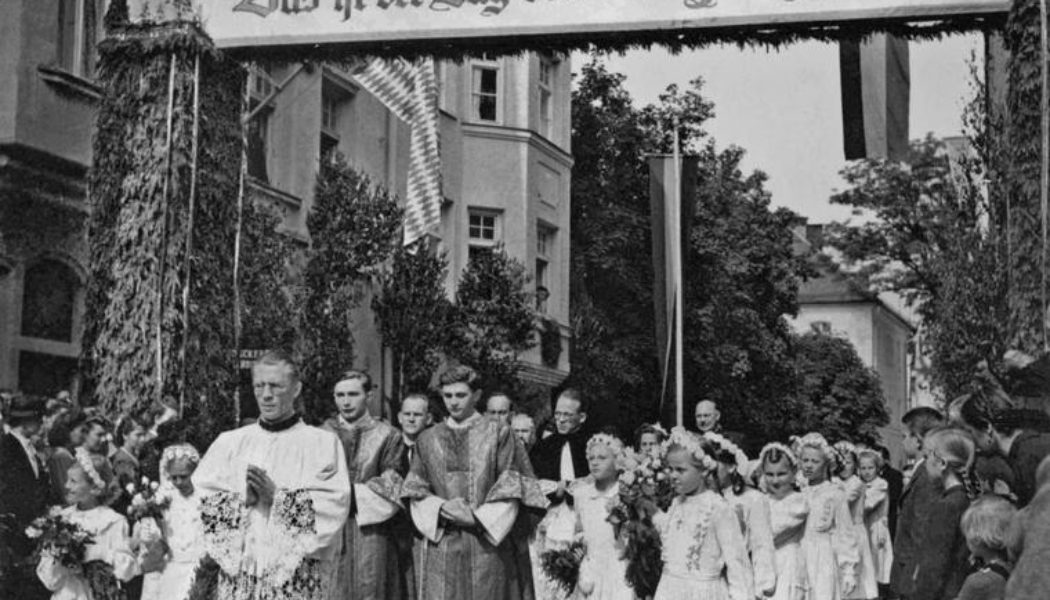
![Following UK Prime Minister Boris Johnson’s Catholic wedding, the task of announcing new Anglican bishops will fall to someone else [London Times paywall]…](https://salvationprosperity.net/wp-content/uploads/2021/06/following-uk-prime-minister-boris-johnsons-catholic-wedding-the-task-of-announcing-new-anglican-bishops-will-fall-to-someone-else-london-times-paywall-scaled-327x219.jpg)

